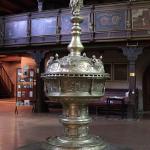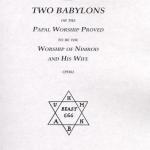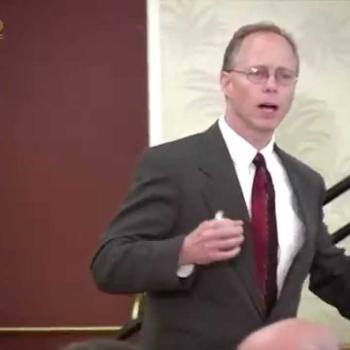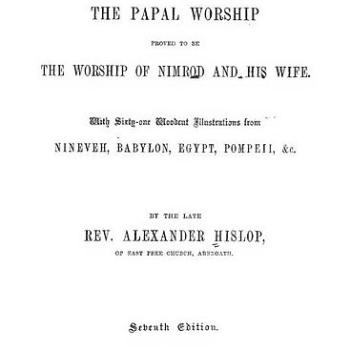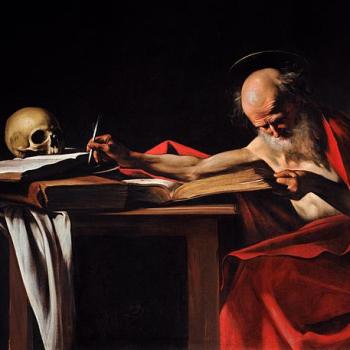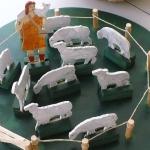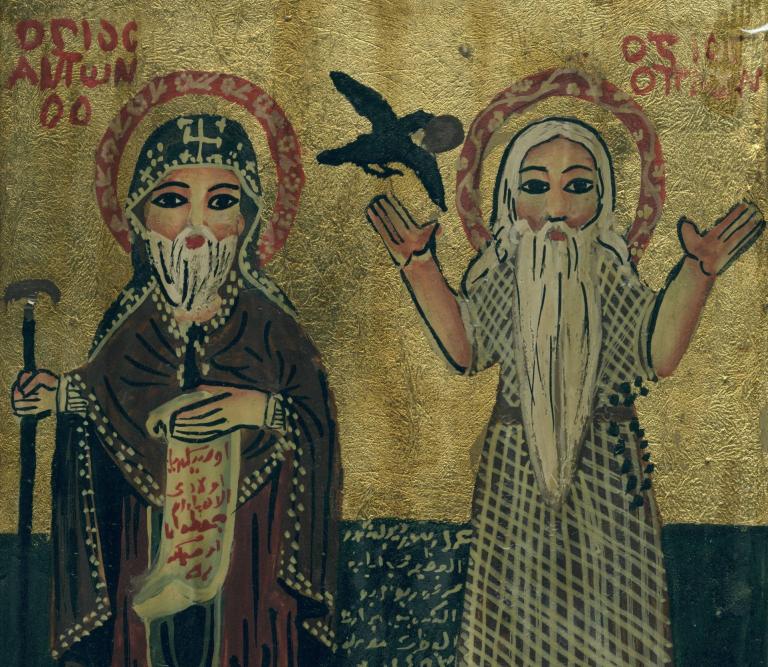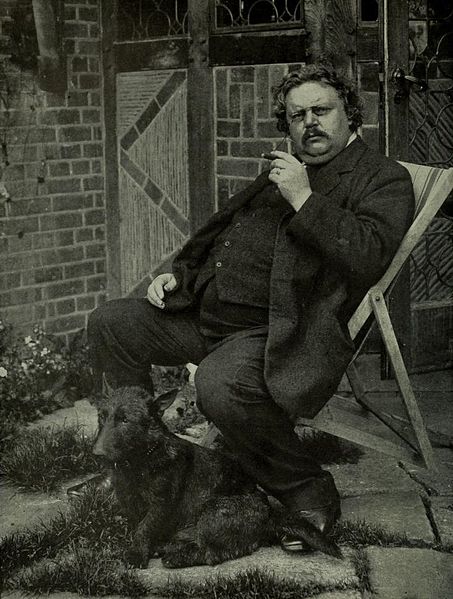
G. K. Chesterton in 1919 [public domain / Wikimedia Commons]
***
(1-25-91)
How does a Catholic respond to the astonishing and widespread displays of disinformation, and often sheer malice, such as we see in anti-Catholic rhetoric? We shall take a look at some of the classic examples from great Catholic writers:
1. Archbishop Fulton Sheen
There are not over a hundred people in the United States who hate the Catholic Church. There are millions, however, who hate what they wrongly believe to be the Catholic Church – which is quite a different thing. (Foreword to Rev. Dr. Rumble, Radio Replies, Vol. 1, 1938, p. ix)
2. G. K. Chesterton
The great temptation of the Catholic . . . is the temptation to intellectual pride. It is so obvious that most of his critics are talking without in the least knowing what they are talking about, that he is sometimes a little provoked towards the very un-Christian logic of answering a fool according to his folly. He is a little bit disposed to luxuriate in secret, as it were, over the much greater subtlety and richness of the philosophy he inherits; and only answer a bewildered barbarian so as to bewilder him still more. He is tempted to ironical agreements or even to disguising himself as a dunce. (The Thing, New York: Sheed & Ward, 1929, 134)
So many people are at once preoccupied with it and prejudiced against it. It is queer to observe so much ignorance with so little indifference. They love talking about it and they hate hearing about it . . . I fancy there is more than meets the eye in this curious controversial attitude; the desire to ask rhetorical questions and not to ask real questions; the wish to heckle and not to hear. (Ibid., 81-82)
I could not understand why these romancers never took the trouble to find out a few elementary facts about the thing they denounced . . . Boundless freedom reigned; it was not treated as if it were a question of fact at all . . . It puzzled me very much . . . to imagine why people . . . should thus neglect to test their own case, and should draw in this random way on their own imagination . . . I never dreamed that the Roman religion was true; but I knew that its accusers, for some reason or other, were curiously inaccurate. (The Catholic Church and Conversion, New York: Macmillan, 1926, 36-38)
. . . rags and tatters of stale slander and muddleheadedness . . . the official policy of the opposition to the Church . . . When a man really sees the Church, even if he dislikes what he sees, he does not see what he had expected to dislike. Even if he wants to slay it he is no longer able to slander it . . . There drops from him the holy armor of his invincible ignorance; he can never be so stupid again. (Ibid., 49-50)
3. James Cardinal Gibbons
The Catholic Church is persistently misrepresented by the most powerful vehicles of information . . . The Church is misrepresented in so-called Histories like Foxe’s Book of Martyrs . . . He has been successfully refuted by Lingard and Gairdner. But, how many have read the fictitious narratives of Foxe, who have never perused a page of Lingard or Gairdner? . . .
She is the victim of the foulest slanders . . . If it is a sin to bear false testimony against one individual, how can we characterize the crime of those who calumniate 300 million human beings, by attributing to them doctrines and practices which they repudiate and abhor? I do not wonder that the Church is hated by those who learn what she is from her enemies. It is natural for an honest man to loathe an institution whose history he believes to be marked by bloodshed, crime and fraud . . .
Ask not her enemies what she is, for they are blinded by passion; ask not her ungrateful, renegade children, for you never heard a son speaking well of the mother whom he had abandoned and despised. Study her history in the pages of truth. Examine her creed. Read her authorized catechisms and doctrinal books . . .
Were a tithe of the accusations which are brought against her true, I would not be attached to her ministry, nor even to her communion, for a single day. I know these charges to be false. The longer I know her, the more I admire and venerate her. Every day she develops before me new spiritual charms. (The Faith of Our Fathers, New York: P. J. Kenedy & Sons, revised edition, 1917, xi-xiv)
4. Louis Bouyer
What would strike Catholic susceptibilities would be . . . the caricature set up for attack . . . the things censured would, as a rule, be equally repugnant to a well-informed Catholic as to a Protestant . . . For example, the worship of saints and the veneration of images are denounced as idolatrous; but it is held that Catholics adore the saints in the same way as God, or instead of God, and that they actually pray to images. Or else exception is taken to Papal infallibility, which is taken to be a kind of omniscience; or to the infallibility of the Church, which is thought to mean some kind of sinlessness in ecclesiastics. A pagan element is attributed to Catholic worship, simply because it is thought that the Church regards the efficacy of liturgical prayer or the rosary as independent of the spirit in which it is said; or else they attribute a magical element to the Catholic belief in the sacraments, on the supposition that they do not require faith, contrition, etc., on the part of the recipient . . .
These stock accusations . . . all derive from a view of Catholicism held as self-evident, namely, that it is an organization for practising religion by proxy, God, in his absence, being replaced by an all-powerful agency. This ultimately, and nothing else, is the object of attack. (The Spirit and Forms of Protestantism, translated by A. V. Littledale, London: Harvill Press, 1956, 18)
5. Sir Arnold Lunn
There is no institution in the modern world of which men know less; there is no institution which they are so ready to caricature . . . Catholics exhibit no surprise when their doctrines are travestied . . . Most Catholics avoid controversy not because they dislike intelligent discussion with a non-Catholic, but because the preliminary spade work which is necessary to clear the ground of debate from the litter of ignorant prejudice exhausts all but the stoutest heart. It is tedious to argue with people who believe that Catholics pay for confessions, and that Catholics worship images . . . What can you do with people who exhibit wild surprise when you tell them that Catholics . . . are depressed, not by modern scepticism, but by modern credulity? (Now I See, London: Sheed & Ward, 1944, 125-126)


